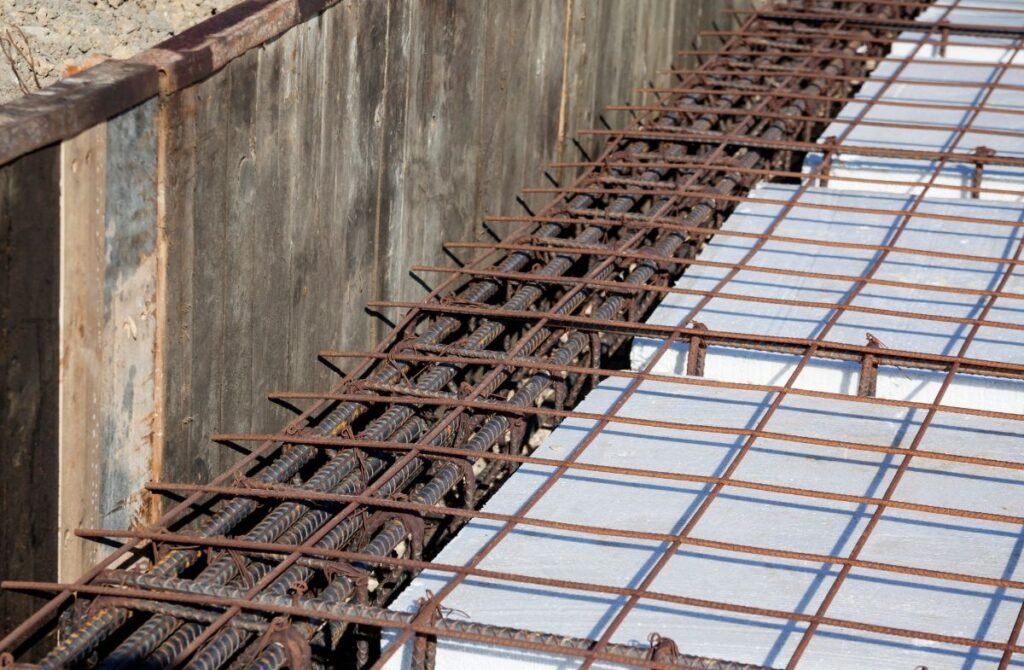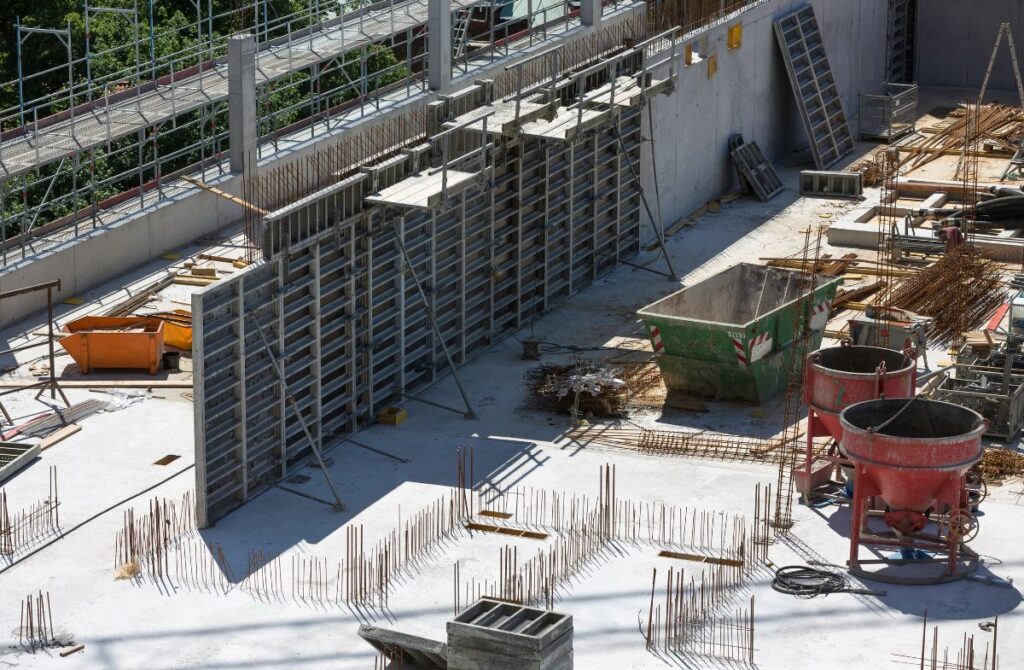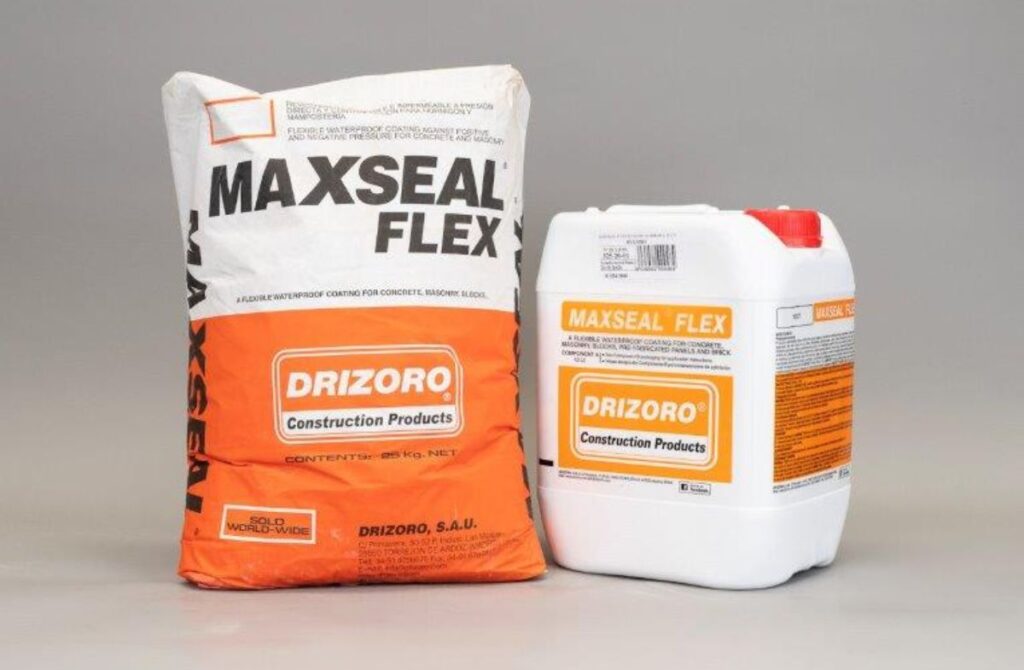
Permanent formwork is a critical step in concrete construction.
It’s come a long way from the original temporary wood frameworks. Today, permanent formwork is composed of specially designed braces and moulds to hold concrete as it sets until it hardens and becomes strong enough to support itself.
To ensure its durability and functionality, this permanent formwork must be waterproofed at the “cold joint” – that is, the point where the permanent formwork wall meets the floor.
Unfortunately, cold joint waterproofing is often overlooked as so many builders set up their permanent formwork and insert the concrete without the appropriate waterproofing beforehand. Fortunately, there is a way to waterproof the base both before and after permanent formwork is erected.
Read on to find the right solutions to effectively waterproof your permanent formwork at the cold joint, as well as the steps involved.
Why do you need to waterproof permanent formwork at the cold joint?
Permanent formwork speeds up the building process by saving hours of labour that used to be needed to de-install temporary formwork once the concrete had cured. It also allows you to reduce construction costs by minimising concrete waste.
Through permanent formwork products, you can also reduce the risks of hidden faults or defects and achieve a high-quality finish for your home. In Australia, some of the most popular permanent formwork products are provided by Dincel, RediWall, Rise Products, Permaform and Zego.
However, to get the most out of permanent formwork, it’s important to apply waterproofing at the cold joint. Here are the key reasons why:
- Waterproofing ensures that cold joints are leak-proof.
- Waterproofing at the cold joint protects your permanent formwork material from becoming warped or distorted.
- Waterproofing permanent formwork at the cold joint Using a cement-based key coat such as EASY BOND allows you to render, tile or stone clad without any issues.

What are the right products to waterproof permanent formwork at the cold joint?
Ideally, it is recommended that you waterproof the concrete floor before building the permanent formwork. This is more convenient and ensures that the cold joint section is adequately protected. However, in most cases, the permanent formwork is already put in place before the cold joint is considered – so the waterproofing has to be done afterwards.
Regardless of whether you have already assembled your building’s permanent formwork or not, Scientific Waterproofing Products (SWP) offers a wide range of Drizoro products that can help you waterproof the cold joints in permanent formwork.
The solutions we offer include:
- Drizoro MAXSEAL FLEX is a two-component product. Once applied and cured, it provides a non-toxic, flexible and waterproof coating against both positive (9 bar) and negative (4 bar) hydrostatic pressure with a very high adhesion on those common substrates in construction – concrete, natural and artificial stone, traditional mortar plasters, bricks, concrete blocks, Hebel® and more.
- Drizoro MAXMESH is a woven fibreglass mesh designed for use with waterproofing coatings to reinforce and strengthen areas that are subject to movement.
- Drizoro MAXJOINT ELASTIC is a two-component product. When both components are mixed, an elastomeric product, although cement based, with high bond strength is achieved that is suitable for sealing joints and cracks against both positive (1 bar) and negative (1 bar) hydrostatic pressure in concrete, pre-cast Elements, mortars, and bricks.
- Drizoro MAXPLUG is a quick-setting cement-based mortar that instantly stops running water from cracks, holes or other openings in concrete, masonry and other substrates. It is slightly expansive and does not shrink, starts hardening in a few minutes and sets within three to five minutes depending on the temperature. Packed in grey powder form, it only requires water for mixing.
All the products mentioned above can only be applied to a wet substrate (i.e. saturated with water).

How to waterproof permanent formwork at the cold joint
To help you, we have prepared a set of instructions that can assist you to waterproof your permanent formwork at the cold joint where the wall meets the floor.
Just keep in mind that the information provided here must be used in conjunction with the appropriate technical data bulletins and material safety data sheets available from our office or website.
Scenario 1: Waterproofing the concrete floor before building the permanent formwork
- For the guide track on a concrete floor
With an even surface: Wet the surface and apply MAXSEAL FLEX at the rate of 1mm thickness to the area covered by the guide track, extending by 50mm past the area covered by the track onto the floor. Afterwards, place a guide track and secure it as specified.
Uneven surface: Wet the surface and apply MAXJOINT ELASTIC to the external edges of the area covered by the guide track at a thickness of no less than 6 mm x minimum width of 15 mm. Then, place the guide track and secure it.
- For a direct pour onto a concrete floor
Scenario 2: Waterproofing after the permanent formwork has been assembled and the concrete was put in
- After placing the formwork wall sections and filling them with concrete
Once concrete within the permanent formwork has set, scuff the PVC formwork (16grit), thoroughly wet the wall and floor area at the base and apply MAXSEAL FLEX at the rate of 1 mm thick to an area from 100mm above floor/wall joint to 100 mm on the floor, then embed MAXMESH (200mm x 50 metre roll) into the total 200mm wide wall floor joint.
Allow to cure overnight, thoroughly wet the area, and apply a second coat at a rate of 1 mm thick, covering the mesh. In the event of an active leak at the floor/wall joint, use MAXPLUG to stop the water flow and proceed as per the wall/floor joint recommendation.
If you’d like further guidance on our waterproofing products, just speak to your local Australian waterproofing specialists.
Get the best waterproofing products for your permanent formwork
At Scientific Waterproofing Products, our team is here to provide you with the right solutions for your unique situation. We offer a wide range of Drizoro cement-based waterproof coatings for all of your maintenance and restoration requirements.
So, if you’ve got any questions or issues, or you’d like to find out which product is best for your needs, contact us today! You can also check out a list of local Drizoro resellers and applicators here.
As always, SWP is committed to providing high-quality waterproofing coatings, restoration products and maintenance solutions to any problem.